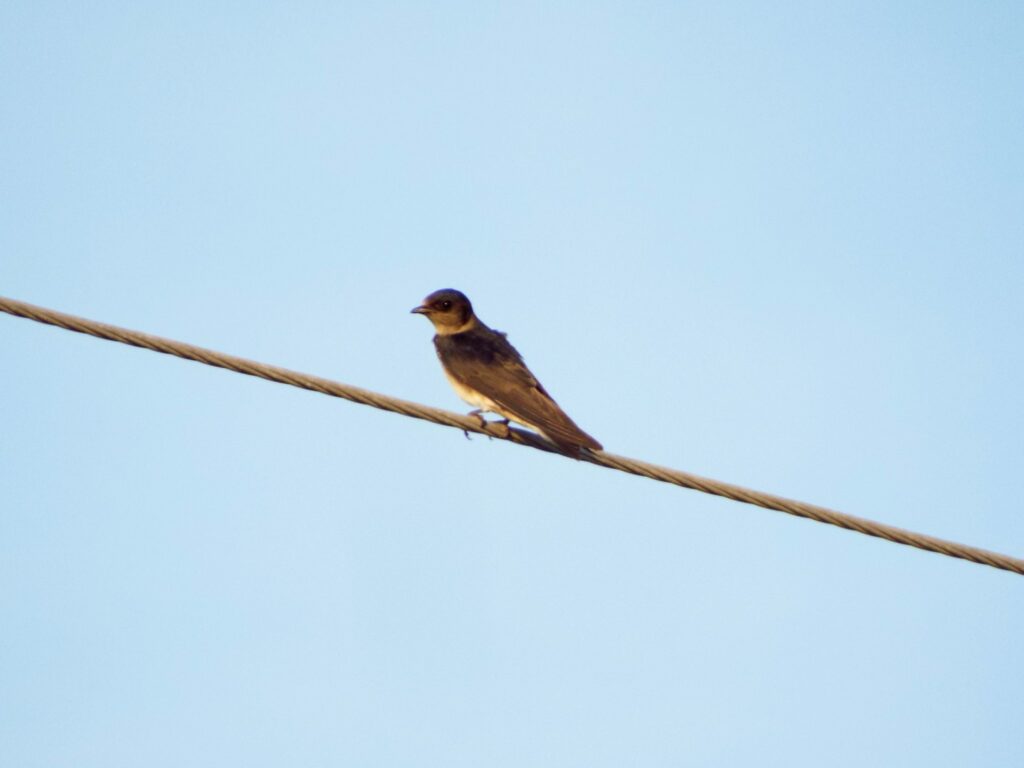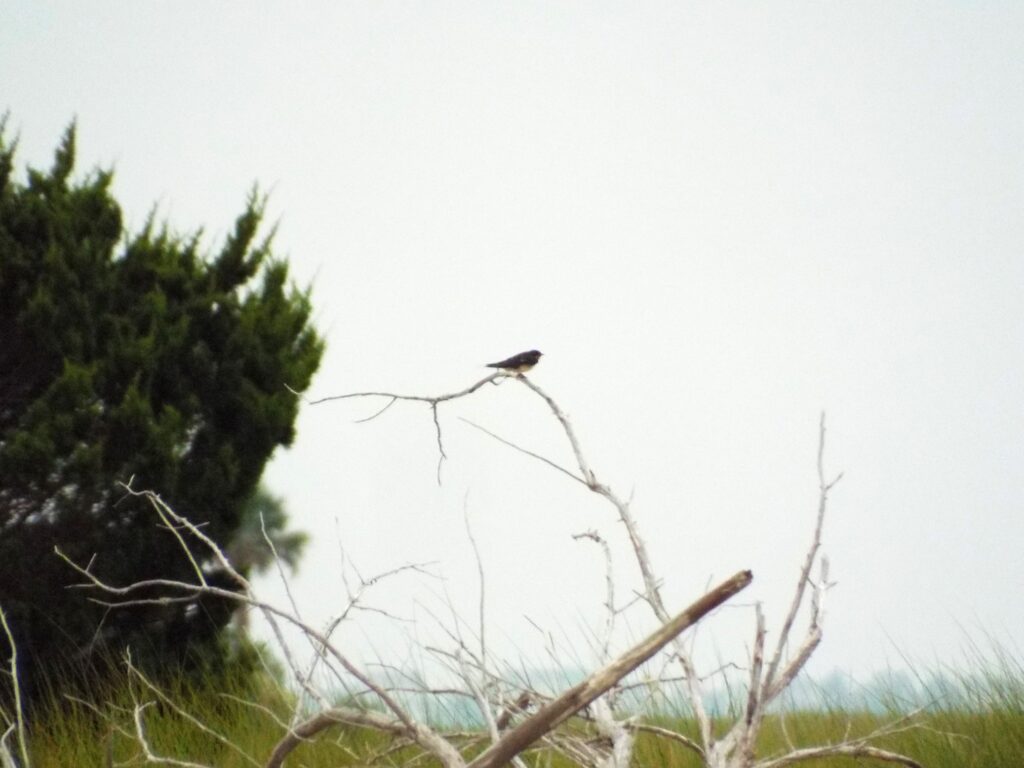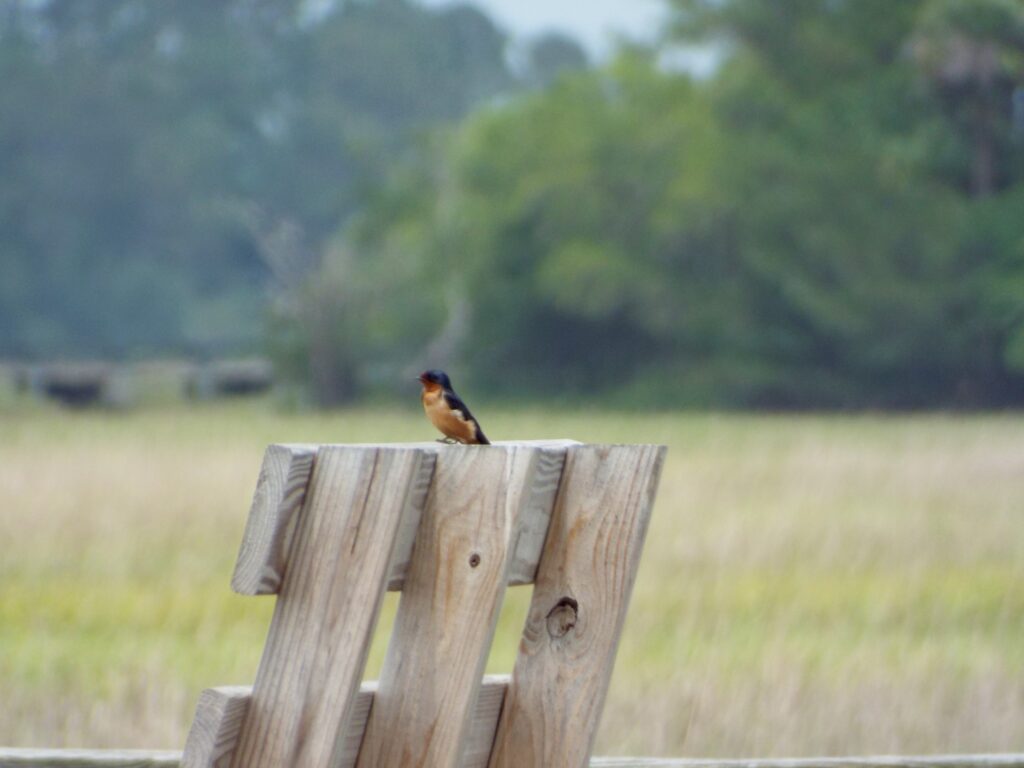




This week for Flora and Fauna Friday we have the aerial ace roosting in your rafter space, the Barn Swallow (Hirundo rustica).
The Barn Swallow is a cosmopolitan bird species, being found across the temperate regions of the world. They join us here in the southeast for our spring but head down to the southern hemisphere as the days get shorter. They live their lives riding the wake of spring, in a loop of infinite summer they daydream of Icarus, circuiting half the globe to chase the sun.
The Barn Swallow is an unmistakable bird, by both color and shape. Their back is a deep and shimmering iridescent indigo. A barely detectable black mask surrounds their eyes, contrasted by a forehead and throat of rich rust-red that stains downward to their ruddy breast and belly. Their bill is small and their legs smaller, both ill-equipped for a life foraging along the ground. Barn Swallows have higher ambitions, skyward eyes. Their wings are long and pointed and their tail long and forked, the eponymous “swallowtail” shape. These long and pointed wings allow for high speed flight and that forked tail serves as a rudder for aerial agility. All this is needed, as Barn Swallows hunt on the wing.
Like all our swallows, Barn Swallows are “hawkers”, they catch flying insects for food. Swallows spend their days searching for listless insects flying upward on thermals. Screaming through the screaming Barn Swallows fly with unmatched precision as they hone in on prey. Then, mouth agape, they gulp down bugs, beetles, moths, dragonflies, and all manner of unlucky insects midair. They even drink on the wing, skimming the water’s surface to siphon a sip. They only land to rest and to nest.
Barn Swallows get their common name from their preferred nesting habitat, barns! Well, really any open air human structure with a roof will do. Much like their cousin the Purple Martin, Barn Swallows have discovered the marvel of human engineering and the convenience of free rent from squatting in someone else’s house. Barn Swallows prefer to nest under bridges and piers or in hay lofts and pole barns. Anywhere with a dry roof overhead, air flow underneath, and a path for quick entrances and exits will suffice. In nature, this would have been caves and cliffs. But here on Edisto, and in much of the Lowcountry, we don’t have any rocks nor elevation to speak of. So the floor joists under elevated houses have become an enticing nursery for any Barn Swallow couple out house hunting. The closer that structure is to fields, ponds, and creeks, then the more ready access Barn Swallows have to food and water and thus the more attractive the nest site. Barn Swallows build their nest like adobe, wet mud held together with dried grass, laid one beak-full at a time to form a cup stuck to the side of a wall or beam. Here they’ll lay their eggs and often raise a clutch of four or five chicks at a time. Like most squatters raising five kids, Barn Swallows tend to make a mess of the place and leave behind a great quantity of guano. But they do pay back a little for their inconvenience. Barn Swallows, just like Purple Martins, help with pest control, feasting on agricultural pests and blood sucking insects wherever they stake their claim.